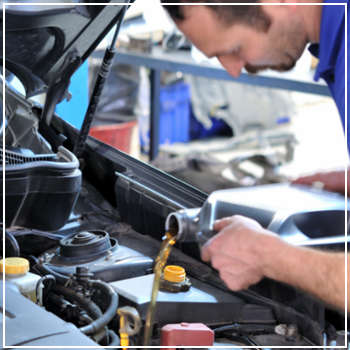I’m sure you already know the importance of routine car maintenance like oil changes and tire rotations, but did you ever stop to think about your transmission? It’s one of those things people often overlook, but neglecting it can lead to some serious and expensive repairs down the road. Think about it—your transmission directly affects how well your vehicle runs, especially as it accumulates mileage. The older your car gets, the more likely it is to break down if your transmission isn’t in top shape. So, what can you do to keep your transmission healthy? Your transmission can face a lot of stress, and one of the main culprits is heat. If you’ve ever felt your car struggling while climbing a hill, it might be because it’s working too hard. When this happens, try manually shifting down to a lower gear to help increase the RPMs. This can make a big difference. If you notice your gears slipping or feeling unresponsive, it’s probably time for a service appointment. Another factor that adds stress is frequent braking, particularly in stop-and-go traffic or hilly areas. Every time you hit the brakes, you’re putting extra strain on your transmission. To reduce this, try to anticipate stops ahead of time and ease off the accelerator instead of slamming on the brakes. Additionally, always engage the parking brake when parked on a slope. This simple step helps protect the parking linkage from unnecessary wear and tear. When you visit a reliable mechanic or body shop, they’ll probably bring up transmission fluid changes. For automatic vehicles, it’s generally recommended to change the fluid every 15,000 miles. However, if you’re nearing that milestone, why not check the fluid yourself? Simply pull out the dipstick and look for any discoloration or signs of leakage. Dark, burnt-looking fluid is a clear sign that it’s time for a change. During your appointment, the technician might suggest either a flush or a drain. But what exactly is the difference between these two procedures? Drivers with manual transmissions typically have an easier time when it comes to maintenance. Manual systems tend to have fewer parts and gears compared to automatics, which can have hundreds of moving components. Fewer parts mean fewer chances for something to break, making manual transmissions generally more durable and cheaper to maintain over time. Regular fluid changes are still important, though. Depending on your vehicle’s manual, you should aim to change the fluid every 15,000 miles or as advised. Since manual transmissions are simpler, maintenance tends to be straightforward and cost-effective. Whether you need routine servicing or a full transmission flush, DaSilva’s Auto Body is here to help. Give us a call today to schedule an appointment! Remember, taking care of your transmission isn’t just about saving money—it’s about ensuring your vehicle runs smoothly for years to come. Neglecting this crucial component can lead to costly repairs down the line, so don’t wait until it’s too late. Stay proactive and keep your car running at its best! LW300FN LW500FN LW600FN LW1200FN ZL50 wheel loader is an upgrade model released by XCMG on the basis of the classic 3T-level loader, featuring higher quality reliability, more economic operations, and better operation comfort.LW300FN is the most popular model of China 3t wheel loader With the features of maturity and reliability of the old model, LW300FN is improved all round, and leads in the same kind of product. Xuzhou Xuqi Heavy Machinery Co., Ltd. , https://www.xqheavy.com
Stress Factors
Transmission Fluid Maintenance
Manual Transmission Tips
Performance Highlights:
Outstanding capability, with traction at ≥9t and breakout force at ≥13t.
High adaptability, with turning radius at 5, 165mm (tire center).
Market position:
Industry 3t single-model sales champion.
Excellent quality power and drive systems.
High maturity and reliability:
The 2600mm wheelbase features high mobility and flexibility and is applicable to all kinds of working sites.
The bucket is made of high strength material to realize high wear and impact resistance.
Optimized bucket shape:
The lengthened bucket bottom and the sharp bucket shape ease the penetration and realize higher bucket loading capacity.
The contracted flare angle and the reduced cross section ease penetration and lifting.
1. Standard bucket: Suitable for diversified working conditions.
2. Rock bucket: It's dedicated for handing of hard materials (such as rock), featuring good resistance against wear and impact.
3. Coal bucket: It's dedicated for handling of bulk materials (such as coal), featuring high bucket capacity and high efficiency.
4. Clamp: For grab and transport of various woods and tubing.
5. Bale grabber: It's used for the grabbing and handling of various light materials in farms, biological power plants, and paper mills.
June 05, 2025